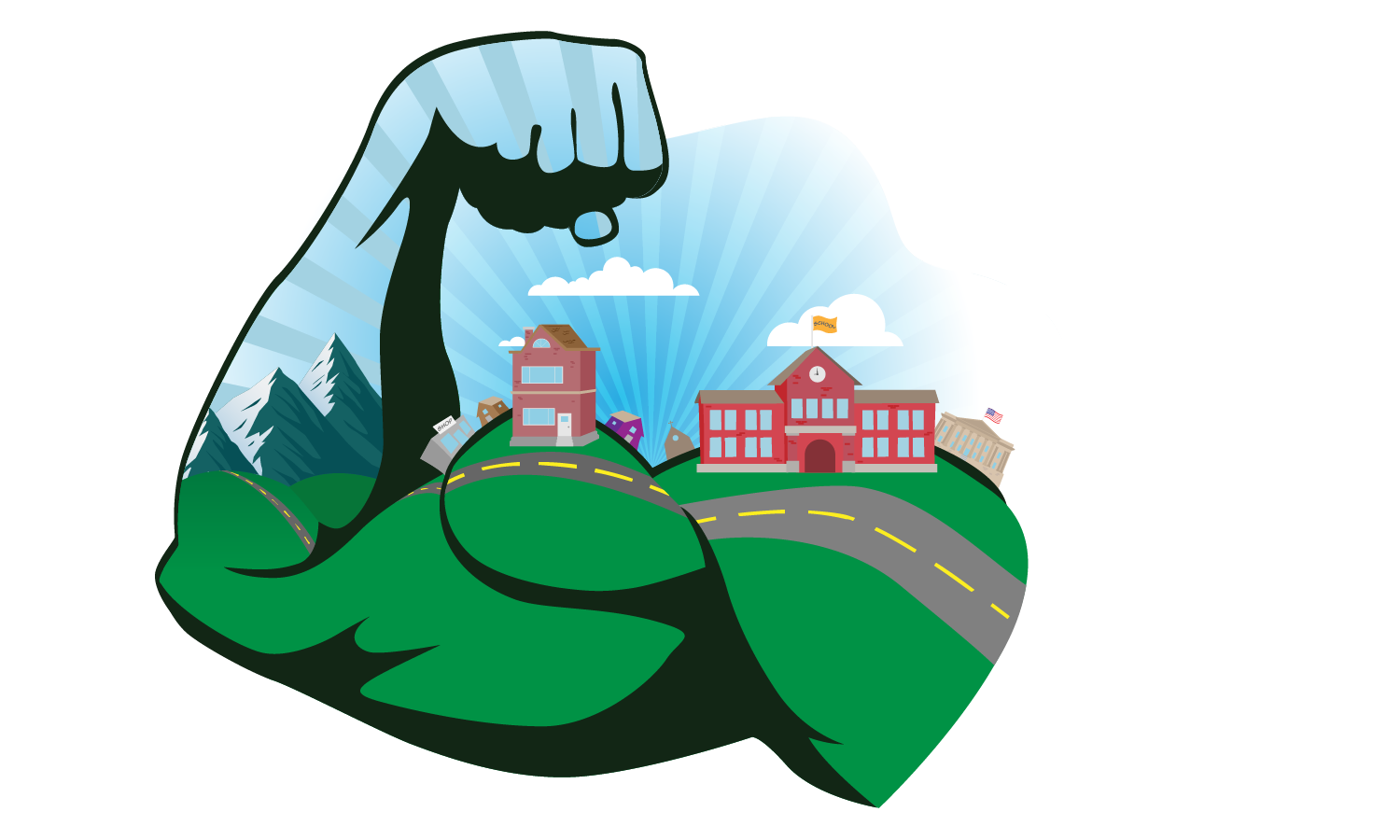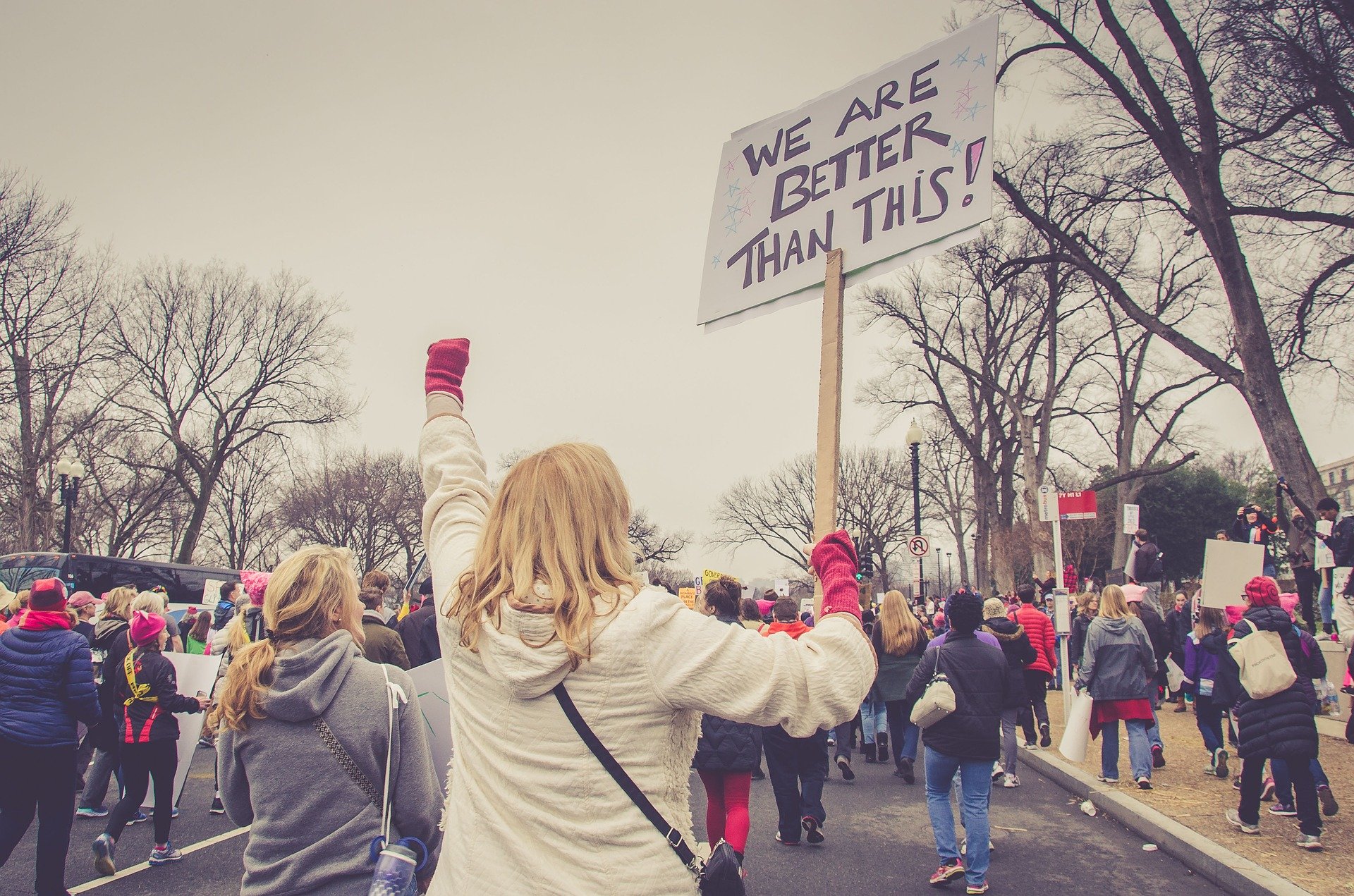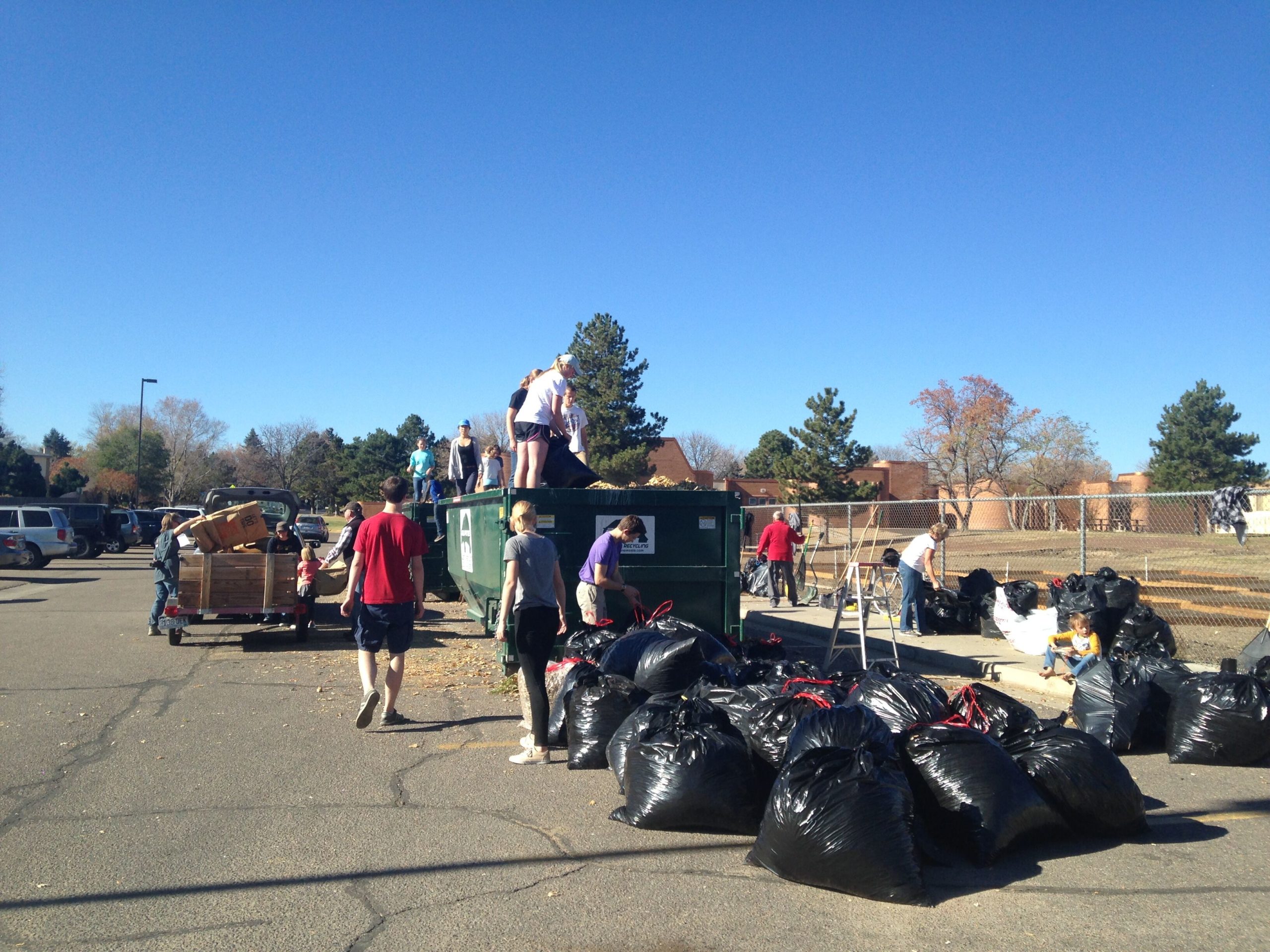By Scott Roulier
Alexis de Tocqueville arrived in America with no small amount of trepidation. Popular government, in his mind, was intimately associated with the excesses of the Revolutionary Terror in France, in which many of his own family members had perished. And, if that was not bad enough, it was his conviction that the upheaval in France, following on the heels of the American Revolution, adumbrated the spread of democracy across the globe. It was with relief, then, that Tocqueville, touring America in the early 1830s, encountered not a perfect but a quite workable form of government—a version of democracy domesticated by a clever constitutional design and supported by moderating social practices and mores.
If America was once the prototypical democracy, a “city on a hill,” as John Winthrop referred to it, based on a number of troubling metrics it is no longer. The dismantling of corporate contribution limits by the Supreme Court’s Citizens United ruling and the discovery of holes in the tax code through which dark money flows freely all magnify the influence of the wealthy. Despite piles of studies that refute the belief that our system is rife with election fraud, new obstacles—i.e. voter roll purges, voter ID laws, limitations on early voting—have made it more difficult, not less, for people to exercise the franchise.
Sophisticated computer software has given rise to partisan gerrymandering on steroids, allowing mapmakers to maximize the “vote-wasting” (the real secret) of the opposition party so that a majority party can maintain its grip on its state house and congressional delegation, regardless of whether it receives fewer votes overall. Conspiracy theories and misinformation spread like viruses on social media platforms. And, as painstakingly documented by Steven Levitsky and Daniel Ziblatt in their book How Democracies Die, the current administration engages in eye-popping democratic norm-breaking not seen since the pre-Civil War period. It is little wonder, then, that the Economist’s Intelligence Unit downgraded the U.S. from a “full-fledged” to a “flawed” democracy—and that was back in the halcyon days of 2016.
Fortunately, democracy is not just a game played by elected officials. Citizens, on a daily basis, enter the fray and make their mark on their communities. In short, what often fails to register in the declensionist narratives of democracy is what we might call associational democracy—a collection of citizen-centered activities and attitudes that often fly too low to the ground to be detected, even though their impact is still substantial. A fairly new term in the associational lexicon is “civic muscle,” and it joins concepts like social capital (social networks and norms of trust and reciprocity), collective impact and civic capacity (the latter two emphasizing multi-sector collaboration around a common agenda).
 From one perspective, civic muscle might be viewed as a category descriptor, as a catch-all phrase for the forms of citizen agency enumerated above. While there is nothing wrong with this linguistic deployment, it misses the potential the metaphor possesses to amplify and reveal the social dynamics of citizen action. The latter can be achieved by highlighting several analogies between the exercise of corporeal and civic muscle.
From one perspective, civic muscle might be viewed as a category descriptor, as a catch-all phrase for the forms of citizen agency enumerated above. While there is nothing wrong with this linguistic deployment, it misses the potential the metaphor possesses to amplify and reveal the social dynamics of citizen action. The latter can be achieved by highlighting several analogies between the exercise of corporeal and civic muscle.
Illustration by Wes Obrigewitsch
Civic muscle functions in at least two different modes—by mobilizing people and resources to effect social change and by fostering community resilience and stability. The first is analogous to isotonic exercise during which muscles move or contract—usually to lift or press a heavy weight. Civic isotonics, therefore, can describe historic change in a particular group’s social status, for example, the passage of the Nineteenth Amendment that guaranteed a woman’s right to vote. Or, it could refer to profound institutional transformation, like the desegregation of public schools. Civic isotonics, however, is not restricted to large-scale, movement politics.
 Most often, civic muscle, in its isotonic mode, engenders change at the local level, for instance, by forcing a city’s police department to implement significant reforms. And these changes, at whatever scale, presuppose multiple actions discharged over a period of time, actions that can take a wide variety of forms—including neighborly conversations, protests, letters to the editor, and organizational meetings—as long as they are carefully knit together into bundles of muscle strands. Finally, civic isotonics entails more than pressing for institutional change; it can also involve mobilizing people to rearrange the built environment in ways that benefit the entire community—like building walking and cycling-friendly infrastructure that is positively correlated with improved health outcomes.
Most often, civic muscle, in its isotonic mode, engenders change at the local level, for instance, by forcing a city’s police department to implement significant reforms. And these changes, at whatever scale, presuppose multiple actions discharged over a period of time, actions that can take a wide variety of forms—including neighborly conversations, protests, letters to the editor, and organizational meetings—as long as they are carefully knit together into bundles of muscle strands. Finally, civic isotonics entails more than pressing for institutional change; it can also involve mobilizing people to rearrange the built environment in ways that benefit the entire community—like building walking and cycling-friendly infrastructure that is positively correlated with improved health outcomes.
The second mode of civic muscle functioning is analogous to isometric exercise, during which muscles contract but do not move. Whereas the goal of isotonic exercise is generally to increase speed and strength, the goal of isometrics is to create flexibility and stability. One of the most popular isometric exercises is known as the plank. From a civic standpoint, isometrics can be envisioned as a network of  “social planks” in which members of a community provide shelter for the homeless, assist recent immigrants and refugees, care for abandoned pets, and clean up local waterways, to list just a few examples. It is likely that the majority of civic muscle takes this isometric form and, in contrast to the social and physical transformations of the public domain associated with civic isotonics, civic isometric exercise focuses on shoring up and sustaining the fragile tissue that binds communities together.
“social planks” in which members of a community provide shelter for the homeless, assist recent immigrants and refugees, care for abandoned pets, and clean up local waterways, to list just a few examples. It is likely that the majority of civic muscle takes this isometric form and, in contrast to the social and physical transformations of the public domain associated with civic isotonics, civic isometric exercise focuses on shoring up and sustaining the fragile tissue that binds communities together.
Though it is possible to conceptually distinguish the two modes, in reality, they work in tandem: civic isotonics, the large-scale mobilization of citizens and resources to effect social change, rests on and presupposes the background, stabilizing actions of civic isometrics; and civic isometric exercise, given its direct involvement in caring for community needs, raises community awareness of pressing issues that require more robust, isotonic responses.
This elegant model of muscle synchronicity depicts the way things can work in theory. Unfortunately, in this moment, when we need it the most, political conditions often inhibit the growth and exercise of civic muscle. One pathogen deserves special mention: hyperpartisanship. This phenomenon—a dedication to party so intense that it transcends even the national interest—has been described by a host of prominent political scientists, among them, Thomas Mann and Norman Ornstein, who declared that “[w]e have been studying Washington politics and Congress for more than 40 years, and never have we seen them this dysfunctional.” Providing empirical support for an abundance of anecdotal evidence, Keith Poole and Howard Rosenthal developed a sophisticated algorithm that revealed a yawning ideological gap between members of Congress—the widest it has been in over a hundred years. Elite partisanship is relevant to civic muscle because it trickles down to the grassroots level where the polarization of average citizens generates uncomfortable levels of friction, leading community members to cease rowing in the same direction or to retreat from public life altogether.
A lack of muscle coordination or, worse, civic muscle atrophy through disuse, not only interrupts and suspends community transformation. What is most alarming is the corrosive impact political polarization can have on the maintenance of democratic norms. John Dewey warned Americans not to “act as if our democracy were something that perpetuated itself automatically; as if our ancestors had succeeded in setting up a machine that solved the problem of perpetual motion in politics.” Indeed, institutional design alone is not adequate to guarantee a healthy democracy. Many fledgling democracies copied our system wholesale—adopting bicameral legislatures and presidential systems—but, nonetheless, descended into chaos. Where deep social divisions and the centripetal forces of party competition threaten to explode the body politic the only reliable constraint on political action, insists the democratic theorist Robert Dahl, is a durable consensus on democratic norms, for instance, a commitment to fair play and to the toleration of political rivals.
Is there a way to preserve what is left of these norms in our own democracy and to fortify them in order to secure a better future? There are no easy answers, but we might gain insight by reflecting on physical muscle injuries and repairs. Significant tears in muscle tissue can be debilitating and require a lengthy convalescence; however, micro tears in muscle tissue, ones that occur in the normal course of exercise, are the necessary precursors to muscle growth. With this in mind, consider that sheltering in the safety of our political tribes might be the civic equivalent of lounging on the couch. That dopamine rush cognitive scientists tell us accompanies the confirmation of our political biases? The equivalent of a junk food high.
We know that combating muscle wasting and fat accumulation in our physical bodies requires us to subject our muscles to at least a modest amount of exertion and stress. By analogy, jumpstarting the growth of civic muscle will require something similar—exposing ourselves to the discomfort of alternative views, abiding micro tears to the political silos that prevent us from collaborating with our fellow citizens. There are, in fact, organizations and groups (Braver Angels, the Aspen Institute’s Weave Project or Living Room Conversations) that are teaching people how to depolarize and encouraging them to explore transpartisan alliances. The primary aim of these efforts is to restore civility and mutual regard. For, truth be told, if we do not respect and humanize our neighbors, we are not likely to play fair and, in the absence of fair play, the strength of civic muscle in communities across the country is sapped.
Never one to be naïve about the darker currents swirling in democratic societies, Tocqueville, if he were to return to our shores today, would no doubt chronicle the obvious signs of democratic breakdown and decay, especially in some of our major institutions and political processes. Nevertheless, it is also likely that he would discern a countervailing force—regular citizens exercising their civic muscle. On the assumption that we are willing to keep it fit, this observation might lead him, once again, to express at least an attenuated optimism about the prospects for democracy in America.
Scott Roulier is John Trimble, Sr., Professor of Political Philosophy and Social Sciences Chair at Lyon College.



